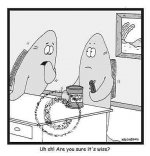mnorwood said:
I played snooker tonight and my snooker tutor suggested that I put a pause in my backstroke for the purpose of better timing on my draw technique.
Many pool players do not use a back pause. What are the advantages of a no back pause technique if any?
Very few pool players do this. The only one I can think of is allison fisher, a snooker player.
I would like to hear from blackjack and bob jewett on this issue.
There are a lot more knowledgeable posters than myself on this forum and I certainly do not have their breadth of experience, their knowledge or skills and I enjoy reading and learning from their posts.
I am a student of the game and write a lot of white papers to myself to aid the learning process. Following is the white paper I put together on this topic in 2002 or 2003, that perhaps some will find of interest.
Once again blending some golf instruction (Holographic Golf by Larry Miller) with pool I might offer the following:
Larry describes the three static positions of the golf swing as 1. the address (posture, stance and alignment),2 the top of the swing (at the point of trasition from backswing to forward swing and 3 the balanced finish.
In pool the three static positions might be, 1 the set at the cue ball before the final stroke, 2 the transition from backswing to forward stroke and 3 the freeze on the follow through at the end of the stroke.
It appears to me that the pause (or set) at the cue ball before executing the final stroke is very important. Certainly, there are some excellent players who do not have a perceptible set at the cue ball from practice strokes to final strokes. Having said that, it apears to me that this set in static position one allows the player to learn to "lock down the shot" and to learn to feel and experience the sensations required to sense the shot is on before they loose the arrow.
Certainly open to debate but the second static position would be the transition from backswing to forward stroke. For some, as elsewhere mentioned, Buddy Hall, Allison Fisher, etc. there is a perceptible pause at static position two. I might suggest you flip a quarter in the air several times and observe the transition from the top of the flip at the point where gravity takes over and the quarter begins to return to earth. I may be wrong, as I often am, but it appears to me that it is the smoothness of this transition that is critical to delivering a proper stroke. For some this will involve a perceptible pause, while for others it will not. However, the transition must be as silky smooth as the transition described above observing the quarter.
The third static position is the freeze on the follow through. The mantra slow back, accelerate through to a fluid finish might apply here. Sometimes this will be described as staying down on the shot. Again it appears that having a smooth stroke that flows to static position number three is a very critical objective.
Having said all of that, the point of Larry Millers book is that if the golfer learns to be in the proper position at the three static positions of the golf swing then the swing can't help but naturally flow through the ball down the target line correctly.
Sorry so long but I found the concepts in Larry Miller's book very practical.
